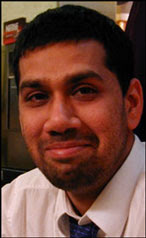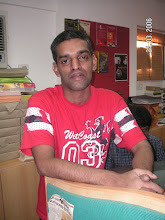
Naresh Fernandes has been at its helm from the beginning. He was born in
Excerpts from an interview with Sunil K Poolani:
Time Out Mumbai was started in September 2004 and I must admit that I’m very pleased with the response it’s received. It’s read in the most unlikely places. Soon after we started, we did a piece about an Irani sweet shop in Dongri that opens for only one week a year, just before Irani New Year. Their speciality is baklava, but made with a pastry-like casing, not the puffy wrapp ing that you find in the
ing that you find in the
When I went to taste these delicacies myself, the owner, Mr Hajrati, told me that he’d been besieged with calls from Time Out readers — he knew who they were because, unlike his regular customers, these people were all asking him lots of questions about his annual trip to Iran to buy the special ingredients for his preparations, the future of the Irani community in Bombay, what he did the rest of the year (he deals in stocks and real estate). Right on cue, a bunch of tourists came wandering through this backlane in Dongri, Time Out cutting in hand, to looking for his shop. Mr Hajarti now reads the magazine too and has insisted that his local newsstand stock it, even though most circulation department executives don’t immediately think of Dongri as being a prime catchment area.
I think the response has been a reaction to the way in which we’ve defined our readership. We write for thinking, intellectually-curious readers — we’re not interested in their income brackets or age or where they live. We believe that there are a large number of readers who care passionately about the city and the things that happen in it and that they’re eager to travel to Eskar village in Borivli to see a stone panel from 1265 depicting an ancient sea battle and to eat in the tiny Nigerian restaurants in the bylanes of Dongri.
We don’t put out a product for mindless consumers: we’re clear that we craft a magazine that engages with readers. There are no secrets to what we do. We try to commit journalism the old-fashioned way. We’re maniacal about detail, we lavish attention to craft and elegance in writing, we try to be as relevant as possible. I must mention that we wouldn’t be where we are without the unrelenting support of our publisher, Smiti Ruia. She has ensured that we can be independent, even at the cost of occasionally irritating potential advertisers. I’ve never worked so hard before — or gained so much satisfaction from a job.
Are there any international benchmark that you follow (vis other Time Out magazines published elsewhere, across the globe) to achieve a universal quality?
The paradox about Time Out magazines around the world is that they offer a universal way of breaking down the specificities of individual cities. So each edition (there are now more than 25 around the world) is unique, each with its own emphasis. Unlike our sister-editions in London and New York, the Bombay editions is less focussed on entertainment and more on culture and city issues. That, we realised, was the huge gap in available media. There’s a lot of PR-driven hype about art exhibitions and musical performers, but not contextual reportage about these things, or critical analysis.
Many publications seem to believe the press releases about restaurants and ignore our flourishing street-food culture. There’s a lot of attention to luxury products but little interest in small places that really give you value for money. Time Out editions around the world share the desire to cut through this fog. There’s also an emphasis on being environmentally friendly and on sustainable, local practices. Finally, we’re all bound by a global code of ethics: there’s no advertorial matter; advertisers don’t have any influence on editorial content and we’re obsessive about avoiding conflicts of interest.
What have been the trails and tribulations, the tasks, and the commitments you had to face while bringing out a magazine that is more of a guide to the city which is unique to the whole world?
Our biggest challenge has been to find intelligent writers. Though
It is also heartening to see that Time Out Mumbai is not just a guide book, but also carry good writing — views, reviews, interviews. Does your experience as an editor, reporter and an author come in handy in selecting some of the best writing and writers from this city?
Time Outs aren’t fashioned as guidebooks: they’re magazines, but use events as the prism through which to highlight and interpret city trends and changes. I’ve been fortunate to have been able to report from the faultlines of Bombay’s biggest tragedies over the last two decades — the riots and bomb blasts of 1992-1993, the closure of the textile mills and the scandal of the mill land sales — and I suppose this has marked the way I view the city and fashion the magazine.
I was also lucky to work with the Wall Street Journal in
I’ve been lucky to be able to draw on two decades of working in the media to persuade old friends and newer colleagues to contribute to the magazine. So our books pages, for instance, feature the venerable Eunice de Souza and the very prolific Jerry Pinto alongside such younger critics as Sanjay Sipahimalani and Karishma Attari. I’ve known our lead opinion columnist Girish Shahane since I was in college and he’s produced piece after provocative piece very fortnight. Two of our backpage columnists, Arundhathi Subramaniam and Ranjit Hoskote, are long-standing friends, but the third, Anuvab Pal, is a recent Mumbai migrant. Our managing editor, Nandini Ramnath, and I spend a lot of time discussing the mix and balance of writers in the magazine, consciously looking for newer writers to feature alongside established names. The challenge, of course, is trying to get it right fortnight after fortnight. But then, magazines are always a work in progress.

1 comment:
Interesting reads...
Jayanti A T
Post a Comment